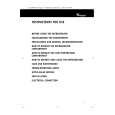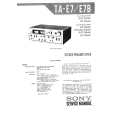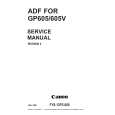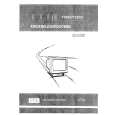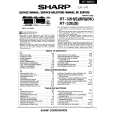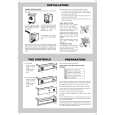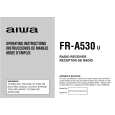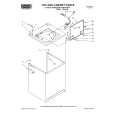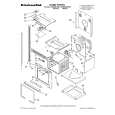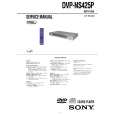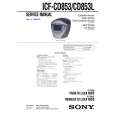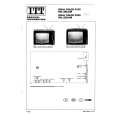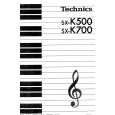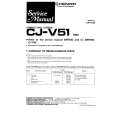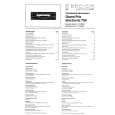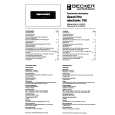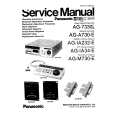|
|
|
Kategorie
|
|
Informacje
|
|
Polecamy
|
|
|
 |
|
|
Dla tego produktu nie napisano jeszcze recenzji!
 ;
Wszystko w porządku.
Instrukcja czytelna i kompletna.
Dziękuję.
all right!
thank you.
 ;
Bardzo dobra instrukcja. Zawiera wszystko co potrzeba, polecam!
 ;
Instrukcja jest OK. Schematy czytelne, opisane niektóre procedury.
 ;
Instrukcja bardzo czytelna. zawiera co potrzeba. Polecam
 ;
...instrukcja serwisowa w pełni czytelna i kompletna. Dziękuję!
ELECTRICAL ADJUSTMENTS
2-15: VERTICAL LINEARITY 1. Receive the monoscope pattern. 2. Using the remote control, set the brightness and contrast to normal position. 3. Activate the adjustment mode display of Fig. 1-1 and press the channel button (1) on the remote control. The Fig. 2-6 appears on the display. 4. Press the channel button (5) on the remote control. 5. Press the VOL. UP/DOWN button on the remote control until the SHIFT quantity of the OVER SCAN on upside and downside becomes minimum. Fig. 2-5 2-12: SUB TINT (AV) 1. Receive the color bar pattern. (Audio Video Input) 2. Connect the synchro scope to TP803. 3. Using the remote control, set the brightness, contrast, color and tint to normal position. 4. Activate the adjustment mode display of Fig. 1-1 and press the channel button (4) on the remote control. The Fig. 2-3 appears on the display. 5. Press the channel button (4) on the remote control. 6. Press the VOL. UP/DOWN button on the remote control until the section "A" becomes a straight line. (Refer to Fig. 2-5) 2-13: HORIZONTAL PHASE 1. Receive the monoscope pattern. 2. Using the remote control, set the brightness and contrast to normal position. 3. Activate the adjustment mode display of Fig. 1-1 and press the channel button (1) on the remote control. The Fig. 2-6 appears on the display. 4. Press the channel button (1) on the remote control. 5. Press the VOL. UP/DOWN button on the remote control until the SHIFT quantity of the OVER SCAN on right and left becomes minimum. 1. H. PHASE 2. H. BLK 3. V. SIZE 4. V. POSI 5. V. LIN 6. V. SC 7. V. COMP 8. (H FREQ) 2-16: VERTICAL POSITION 1. Receive the color bar pattern. 2. Using the remote control, set the brightness and contrast to normal position. 3. Activate the adjustment mode display of Fig. 1-1 and press the channel button (1) on the remote control. The Fig. 2-6 appears on the display. 4. Press the channel button (4) on the remote control. 5. Adjust the value of R408 and R421 until the horizontal line of the color bar comes to approximate center of the CRT. NOTE R408 and R421 are fixed resistors. Use a variable resistor to determine the optimal value and insert that value resistor. Lessen the value of R408: Picture will move about 2mm DOWN. Lessen the value of R421: Picture will move about 2mm UP. 2-17: OSD HORIZONTAL 1. Receive monoscope pattern. 2. Using the remote control, set brightness and contrast to normal position. 3. Activate the adjustment mode display of Fig. 1-1 and press the channel button (5) on the remote control. The Fig. 2-2 appears on the display. 4. Press the channel button (4) on the remote control. 5. Press the VOL. UP/DOWN on the remote control until the difference of A and B becomes minimum. (Refer to Fig. 2-7)
[ TV ]
"A"
0. RETURN
Fig. 2-6 A
OSD H
2-14: VERTICAL SIZE 1. Receive the monoscope pattern. 2. Using the remote control, set the brightness and contrast to normal position. 3. Activate the adjustment mode display of Fig. 1-1 and press the channel button (1) on the remote control. The Fig. 2-6 appears on the display. 4. Press the channel button (3) on the remote control. 5. Press the VOL. UP/DOWN button on the remote control until the horizontal over scan is equal to the vertical over scan.
B
Fig. 2-7
|
|
 |
> |
|

